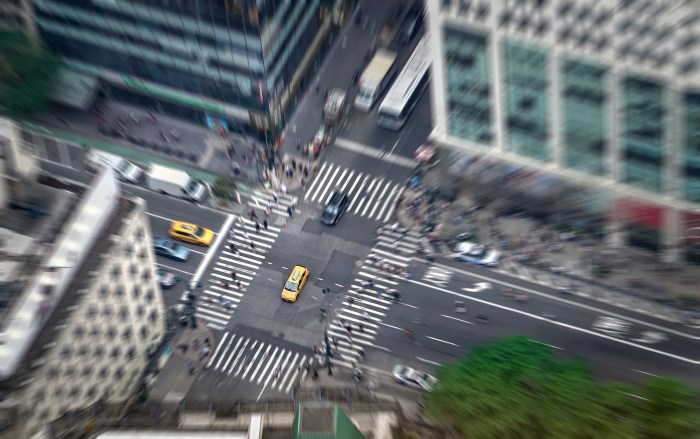A few weeks ago I walked into the MetLife building to do an interview, and for some reason my mind wandered back three decades. I said to my cameraman, “Remember when the helicopter tipped over here? When the blade that came flying off the roof?”
It was a Friday in New York, May 16,1977. The city was caught up with the “.44 Caliber Killer,” later known as the Son of Sam.
Passengers were lining up on top of the Pan Am Building, as it was known back then. They would pay $25 dollars for a quick 10-minute ride to Kennedy Airport. The Sikorsky chopper sitting on the pad suddenly lurched. The landing gear malfunctioned. The rotating blades tipped over, cutting into and killing four passengers standing on the roof. Then parts of the blade flew wildly, raining down onto 43rd Street, killing a pedestrian. Thirteen others were injured.
“We haven’t had a helicopter crash in a while,” I said, in typical ghoulish newsman fashion. I hate when I say things like that, as if the next big tragedy is only waiting around the corner. But with helicopter crashes, sadly, it’s been true.
Oddly enough, pilots of planes and helicopters are, for the most part, on their own when flying under 1,100 feet.
They may talk to a tower (as the pilot in this case did, with Teterboro) but the usual instructions are to “see and avoid.” In other words, if you see something close, quickly get the hell out of the way.
That may not seem like a terribly scientific approach, but pilots tell me it works. They say a collision is one-in-a-million.
Still, I was not terribly comforted.
Following Saturday’s fatal mid-air crash over the Hudson, Fox 5 decided we should go up and see for ourselves. I’m not afraid to fly, but you always get a weird feeling retracing the paths of the dead.
Hovering above the crash site, I wondered what those final terrifying seconds must have been like for those nine people.
As I stared out at the skies, I got the feeling of being a goalie in a power play: If I turned my head, would I miss something that could prove fatal? What about blind spots? They seemed to be everywhere. Pilot Frank Cochrane indicated to me that for him, vigilance is second nature, that indeed he is always on the look-out when he comes down below 1,100 feet.
Is there a simple solution? Probably not.
Mayor Michael Bloomberg says the skies should indeed be made as safe as possible, but he does not want to lose the very significant tourist business the choppers provide.
Making air traffic controllers take on the task of low-flying aircraft would further tax a system that many say is already overburdened.
Small aircraft could be made to install avoidance systems, but of course that would be costly.
Local officials say they want improved air-safety regulations. The National Transportation Safety Board (NTSB) says it has made many recommendations to the Federal Aviation Administration (FAA), and that they have not been implemented. It sounds like the bureaucratic finger-pointing has begun.
In the meantime, my flight around the crash-site did not reassure me about the possibility of another accident.
Maybe I’m just overly cautious. As I got out of Skyfox, I instinctively hunched over my six-foot-one-inch frame to avoid the whirring blades. Chopper reporter Chris Christie chuckled. “You don’t have to hunch,” he said. “That’s for the movies!” I stood up. When Chris walked by, I hunched over again.
I’ve seen how too many movies end.



































